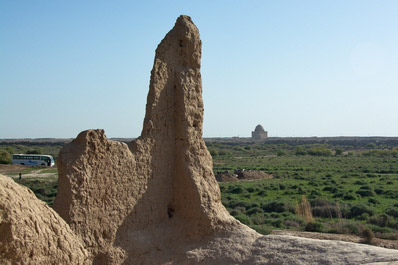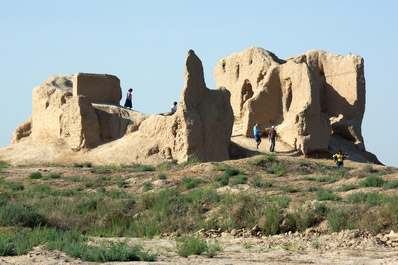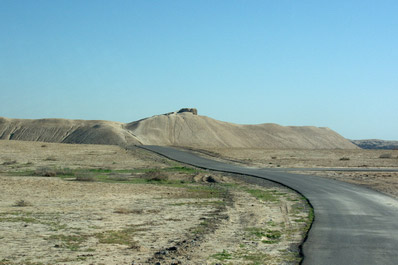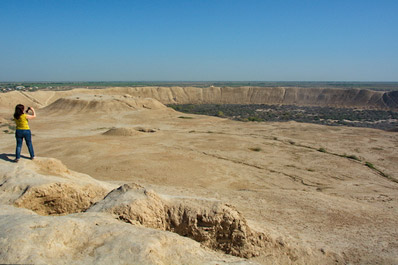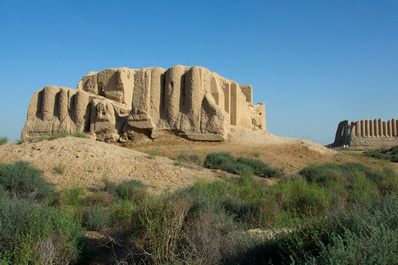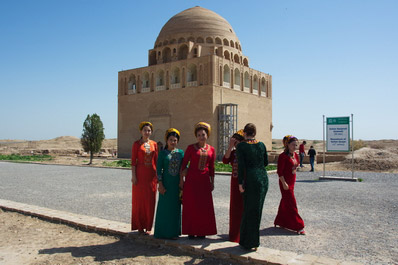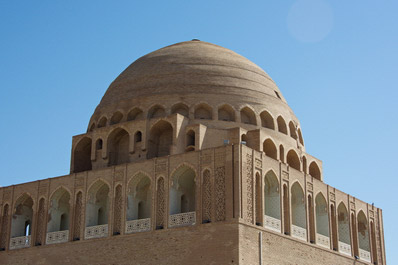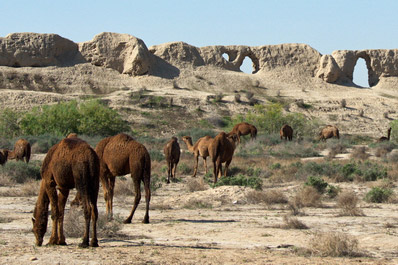Ancient Merv, Turkmenistan
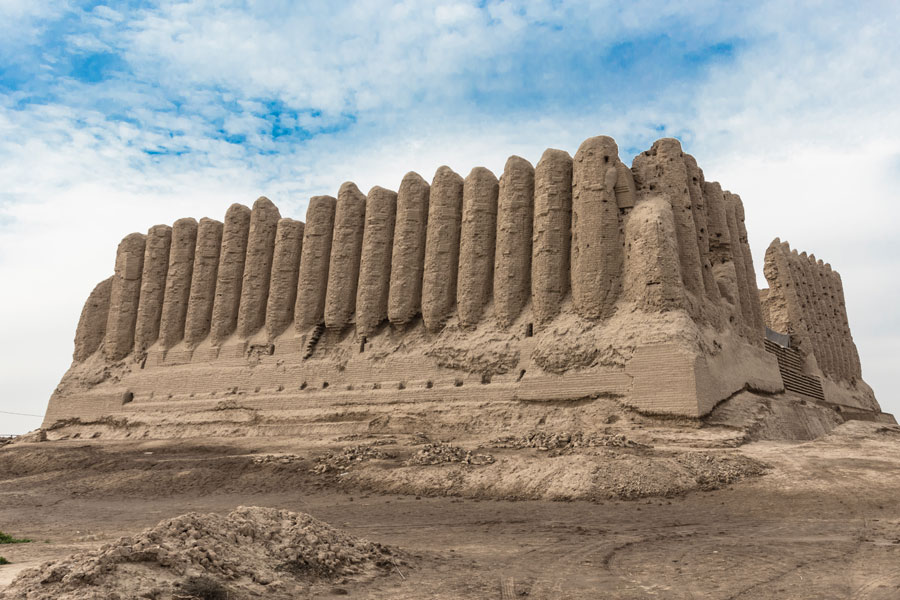
Centre height: 223 m
Region: Mary
State language: Turkmen
Time zone: UTC+5
Postal code: 745400 Mary (30 km from Merv)
Vehicle code: MR
Merv is the oldest known city in Central Asia, with origins dating back over 4,000 years on the banks of the Murghab (Morghāb) River. The city has been destroyed and rebuilt many times, serving as the capital of various states, and by the 12th century, it was the largest city in the world with a population of half a million. While the reasons behind its abandonment remain a mystery, today, Merv stands as a vast expanse of ancient ruins and unique medieval monuments.
Our guide to Merv is packed with useful information and fascinating facts about this historic city, which is now a UNESCO World Heritage Site. You'll find out how to get to this archaeological wonder, the best time to visit and which sites are a must see during your stay in Merv.
How to Get to Merv
Merv is located in the eastern part of Turkmenistan, about 30 kilometres east of the town of Mary. Mary offers a range of accommodation, restaurants and an airport, making it an ideal base for travellers wishing to explore Merv. Most visitors stay in Mary and take day trips to the ancient city.
Merv is 330 kilometres from Ashgabat, the capital of Turkmenistan. You can travel to Mary either by car or by plane. The journey from Turkmenabad is similar, with Merv about 200 kilometres away, across the vast Karakum desert. An asphalt road runs through the ruins of Merv, so travelling by car is convenient.
Merv Tours
A tour to Merv is one of the most rewarding ways to experience the deep history and archaeology of Turkmenistan. This ancient city is part of many tours that start in Turkmenabad, stop in Mary to explore Merv, and then continue to Ashgabat.
A full day Merv tour includes excursions to important ancient fortresses such as Gyaur-Kala, Erk-Kala and Kyz-Kala. You'll also visit the impressive mausoleums of Sultan Sanjar and Yusuf Hamadani, among other important monuments. These structures, dating from different historical periods, show the different eras of Merv's history. To complement your tour of the ruins, we recommend a visit to the Mary History Museum, where you can view an impressive collection of artefacts unearthed during excavations.
Brief History of Merv
The first settlement in the Merv Oasis appeared around the turn of the 4th and 3rd millennia BC, attributed to the Bronze Age Margiana civilisation, which existed at the same time as the ancient Babylonian kingdom. Over time the settlement grew into a fully developed city, and in the 4th century BC the Margian fortress of Alexandria was built nearby by order of Alexander the Great.
In the 1st century AD, Merv was reached by an expedition led by the Chinese commander Ban Chao. By the 3rd century a Christian community had been established in the city. Merv became a multicultural and multi-religious centre on the southern branch of the Great Silk Road, with trade routes extending to Iran, Afghanistan and India. In the 7th century, the city was conquered by the Arabs and became the cultural and scientific centre of the Arab world in Central Asia.
By the 12th century, Merv had reached the height of its prosperity as the capital of the Seljuk Empire. One of the most significant landmarks from this period is the monumental mausoleum of Sultan Sanjar, the ruler of this powerful empire. Historians estimate that Merv had a population of over 500,000 at the time, making it the largest city in the world.
However, at the beginning of the 13th century, Merv was destroyed by the army of Genghis Khan, leaving it abandoned for almost 200 years. The Mongols not only destroyed the fortifications and residential areas, but also the irrigation system along the Murghab (Morghāb) River. Although the city and its canal system were rebuilt in the early 16th century, Merv never regained its former importance. It changed hands between several powerful kingdoms until the mid-19th century, when it was handed over to the Turkmen, who surrendered it to the Russian colonial army in 1884. The city gradually fell into disrepair, while a new city, also called Merv until 1937, grew up 30 kilometres to the west and was later renamed Mary.
Merv Sights & Attractions
The historical sites of Merv are spread over a vast area of more than 15 square kilometres. These sites can be divided into two main categories: fortress ruins and mausoleums.
Erk-Kala. A circular fortress dating from the 6th century BC with weathered walls that resemble a meteorite crater.
Gyaur-Kala. A massive 3rd century BC fortress covering over 300 hectares, built as an extension of Erk-Kala.
Great and Little Kyz Kala. Two small fortresses dating from the 8th-9th centuries, which served as fortified estates for local feudal lords.
Abdullahan Kala. The youngest of Merv's fortresses, built in the 15th century to the south of the main group of historical sites.
Sultan Kala. A fortress representing the new part of Merv, built in the 11th-12th centuries, covering an area of more than 400 hectares.
Yusuf Hamadani Mausoleum. The tomb of a famous 12th century teacher and theologian, whose pupil was Ahmed Yassawi. A new mausoleum was built in the 19th century.
Sultan Sanjar Mausoleum. A 12th-century monument reaching a height of 38 metres, it is one of the main tourist symbols of Turkmenistan.
Askhab Mausoleum. A 15th century religious complex built over the tombs of the Prophet Muhammad's companions.
Muhammad ibn Zayd Mausoleum. A 12th century structure built over the tomb of a prominent figure in Shia Islam.
Best Time to Visit
Merv is situated on the southern edge of the Karakum Desert and experiences a hot, arid climate. From May to September, temperatures frequently soar above 40°C, and dusty winds are common. During the winter months, while it can get chilly in the open areas, the temperature generally stays around 0°C.
The best times to visit Merv are in March, April, September, October, and November. These months offer more comfortable weather and are ideal not only for visiting Merv but also for traveling throughout Turkmenistan.

